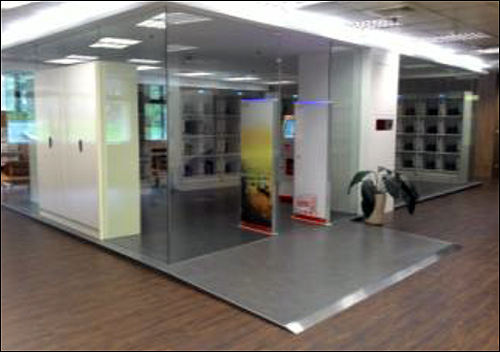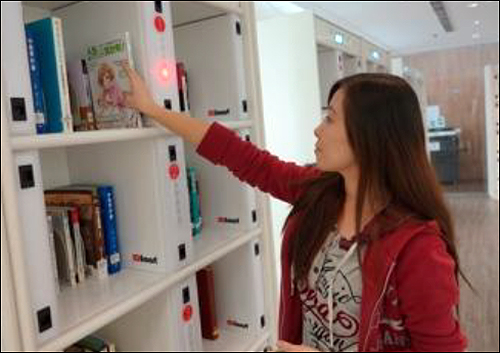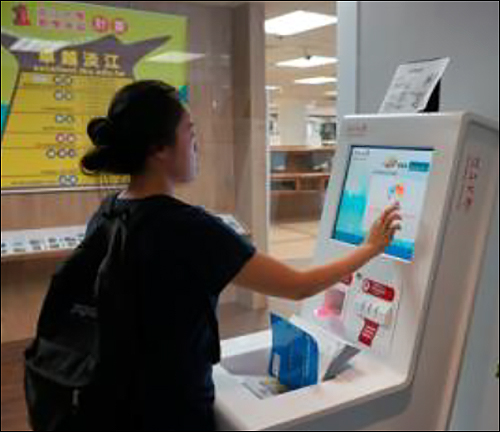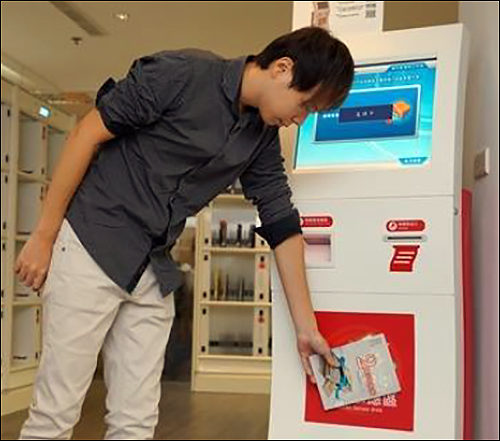Jul 13, 2015"Reserved book" sections in academic libraries are frequently regarded as a huge workload for librarians when books are assigned by professors or are simply popular among patrons. Most of these books are loaned for a shorter period of time. Therefore, librarians need to manage the reserved materials more often than with other circulating items. The process works like this: Librarians must first pick those books from the shelf, and then place them in a certain area behind the circulation desk. When a patron visits the library to pick up a reserved book, the circulation librarian needs to spend some time finding the correct book, and the patron must wait during that process.

What if we can make this process much easier and more convenient through the assistance of technology, by making the reserved book section a self-service area? Recently, Taiwan's Tamkang University Chueh Sheng Memorial Library implemented RFID technology in its reserved book area. This area is an independent space inside the main library, equipped with a book-searching kiosk, an RFID security gate and an RFID self-service station.
Make a Self-service Area for Reserved Books
When a patron reserves a book online at home or outside the library, a librarian needs only to place the reserved book on the RFID smart bookshelf inside the self-service area. The patron then proceeds directly to that area, swipes his or her patron ID card at the book-searching kiosk, and follows the light indicator on the smart bookshelf for the book location.
The visitor can easily find the book and complete the borrowing process at the self-service station. The security gate will ensure that the reserved books are not taken outside the area without being properly borrowed. This area is not only for patrons to pick up reserved books, but also for others who can immediately line up for the next reservation via the kiosk.
The Benefits:
• Librarians can spend more time on patron services instead of managing reserved books.
• The library can calculate the turnover rate of each reserved book, and the statistics from the smart bookshelf can be the reference for book-purchasing decisions.
• Patrons need not wait for librarians to find books; they can easily look for reserved titles and pick them up themselves using the self-service station.
• Since the reserved books section is separate from the rest of facility and functions as a
"small library" inside the main library, it is easy for librarians to manage all reserved books and prevent them from being mixed up with other genres of books.
Phase-by-phase Planning
Now, you may wonder how to start an RFID implementation. Does the entire library collection need to be tagged with passive ultrahigh-frequency (UHF) RFID labels? Will the initial investment cost be too high? One cost-effective approach is for the library to adopt phase-by-phase RFID installation planning. Instead of tagging the entire collection, a facility can tag books only when they are put into reserved book area.
After the first phase is carried out to implement RFID with reserved books, the library can now think about its broader implementation plans. Since the library's final goal is to install RFID technology throughout the whole facility, all of the books will eventually be tagged using RFID labels.
During the first phase of the expansion, the library may perform tagging for the rest of the books. In the second phase, it can purchase related equipment, such as security gates, stocktaking mobile devices and self-service stations, including a self-return station. If the budget allows, the library can also install a machine that automatically sorts and classifies returned books. Reserved books can be a type of classification, and the auto-sorter can make it easy for a librarian to know which books are reserved. He or she can then place them on the smart bookshelf randomly, without much effort.
As this case study shows, it is not necessary for libraries to apply RFID tags to an entire collection at one time. Instead, a library can build an independent area to manage all reserved books with RFID, yet outside the area, it does not need to implement the technology in other sections simultaneously. The library can carry out the RFID deployment step by step, based on its time and budget requirements.
Ling Chang is a library technology consultant for ClarIDy Solutions Inc., a company focused on product identification and system application. Based on RFID technology and years of project-building experience and integration capability, ClarIDy is able to provide practical and feasible solutions to different industrial needs, especially focused in libraries and the Internet of Things. With all of the key technologies, ClarIDy successfully developed a series of products under the brand name IDSmart, with distributors and value-added resellers across Taiwan, China and South East Asia. The company's headquarters is based in Hsinchu, Taiwan, where the products are conceptualized.
Photos by Wen-hsing Feng (Location: Tamkang University Chueh Sheng Memorial Library)





